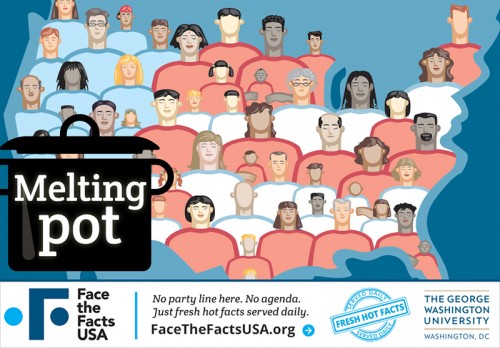
My grandmother (who is of German and Norwegian descent) went on a family road trip to Texas when she was 12 years old, around 1945. While stopping at a laundromat in the South she threw all of the white laundry in one machine, and the colored laundry in a different machine across the hall.
That is, until the others in the building pointed out the true meaning of the “Colored Only” sign, which referred to people, not clothes. Having grown up in rural South Dakota, she had not seriously interacted with an African American person or developed notions of race until that point in her life.
Fast forward about 70 years. Jim Crow laws are long gone. Multiple civil rights leaders have come, gone and left their mark. However, uses of race remain shockingly unchanged.
Although segregation is no longer permitted as it once was, the impact of such legacies remain large. Chicago currently ranks fifth out of large U.S. cities in white/black dissimilarity index; its figure of 83.6 means that 83.6 percent of white people in the city would need to move neighborhoods to evenly distribute the races.
Perhaps more shocking is the fact that this index has grown over the last few decades. In our era of the “post-racial society” and “legal equality,” racial segregation remains massive.
It shouldn’t take statistics, however, to understand that racial issues still exist. Anyone who has picked up a newspaper in the past year likely has heard of a few names — Michael Brown, Eric Gardner, Jordan Davis or countless others — that have been thrust into the limelight due to issues of racial profiling and stereotyping.
The fact remains, however, that profiling exists not entirely on the basis of physical attributes — it has to do with social constructs. In the history of human existence, one of the most powerful social constructs is the construct of race.
Aspects of race in the U.S. have persisted ever since the first U.S. census in 1790. At various times in history, Italians, Jews and Greeks were all considered to be “black,” due to not fitting the universal ideal of being “white.” As late as the 1930s, individual states were legally adopting “one-drop” racial classifications, wherein a single bit of African ancestry would be enough to exclude someone from the “white” category, regardless of how the respondent would prefer to identify. It’s clear that throughout the years the government has spent a lot of time and effort defining what is “not white.”
And thus is the nature of race. As opposed to ethnicity — which involves the grouping and inclusion of people with unified traditions, cuisines or histories — race is a concept created by those in power, meant to label and exclude those who appear dissimilar.
I am personally of a half Chinese, quarter German and quarter Norwegian heritage. Yet, when race inevitably arises on a job application or census sheet, I am faced with two boxes: White, or Asian.
“Asian” does not account for the rich differences that actually exist between the countless ethnicities that are conveniently lumped into “Asian.” For instance, many Cambodian immigrants arrived to the U.S. as refugees in the 1970s, fleeing the dictatorial regime of Pol Pot. As an ethnic group their low-income levels are statistically similar to those of poor African American communities, and they face different socioeconomic conditions than the relatively wealthier and self-selecting Chinese immigrant population. Yet, the lumping of “Asian” cultures makes it easier to forget these historical differences and label all Asians under the “model minority” image, while those Asians that struggle are criticized simply for betraying the stereotype — regardless of the adverse history their specific ethnicity may have faced.
Yet these physical identifiers form the basis for many stereotypes, since all of the members of a single race must naturally maintain a homogenous identity.
Similar generalizing goes for any other racial category: whites fit the ideal of American work-ethic, individualism and cultural orthodoxy, while a black person will face the labels of lazy, uneducated or scary.
Without race, it would perhaps be harder to generalize minorities, and hopefully end some of the real-world consequences resulting from generalizing and stereotyping. Rather than assuming all people of dark skin are “thugs,” we might spend more time acknowledging the heterogeneity between the different cultures that folks might identify by.
Perhaps most importantly, the concept of “white” might be dismantled, and some of the actions used to exclude those who are not “white” may lessen in practice. Rather than excluding others based upon their dissimilarity with “white values,” we would be forced to acknowledge the heterogeneity within the “white” population. Thus, as a society we might better acknowledge the possibility that there is, in fact, no singular white culture of superiority.
The elimination of race would not solve all issues of discrimination, but it would be a start. Want a post-racial society? It’s time we stop thinking about race, and start thinking about ethnicity.
